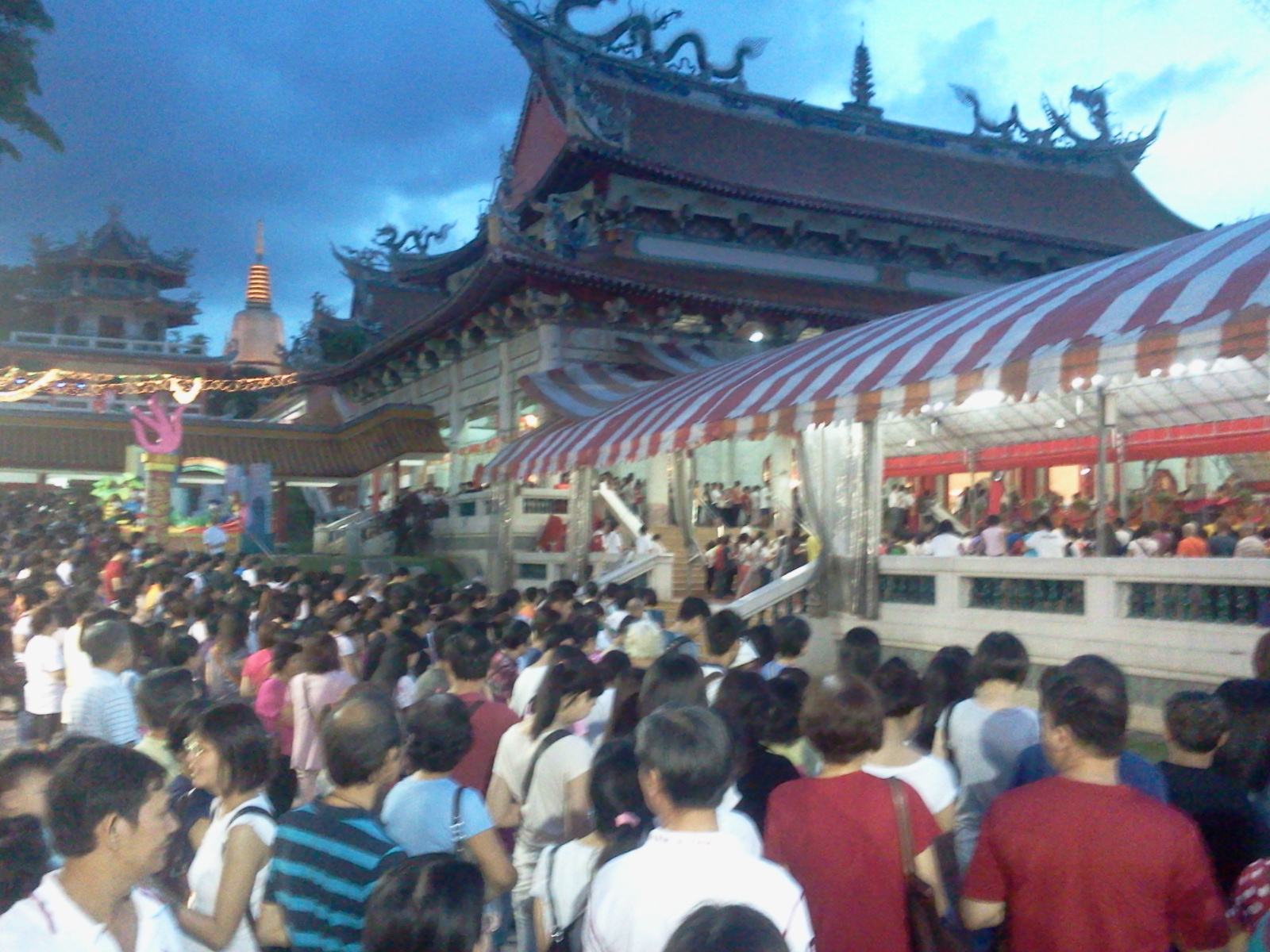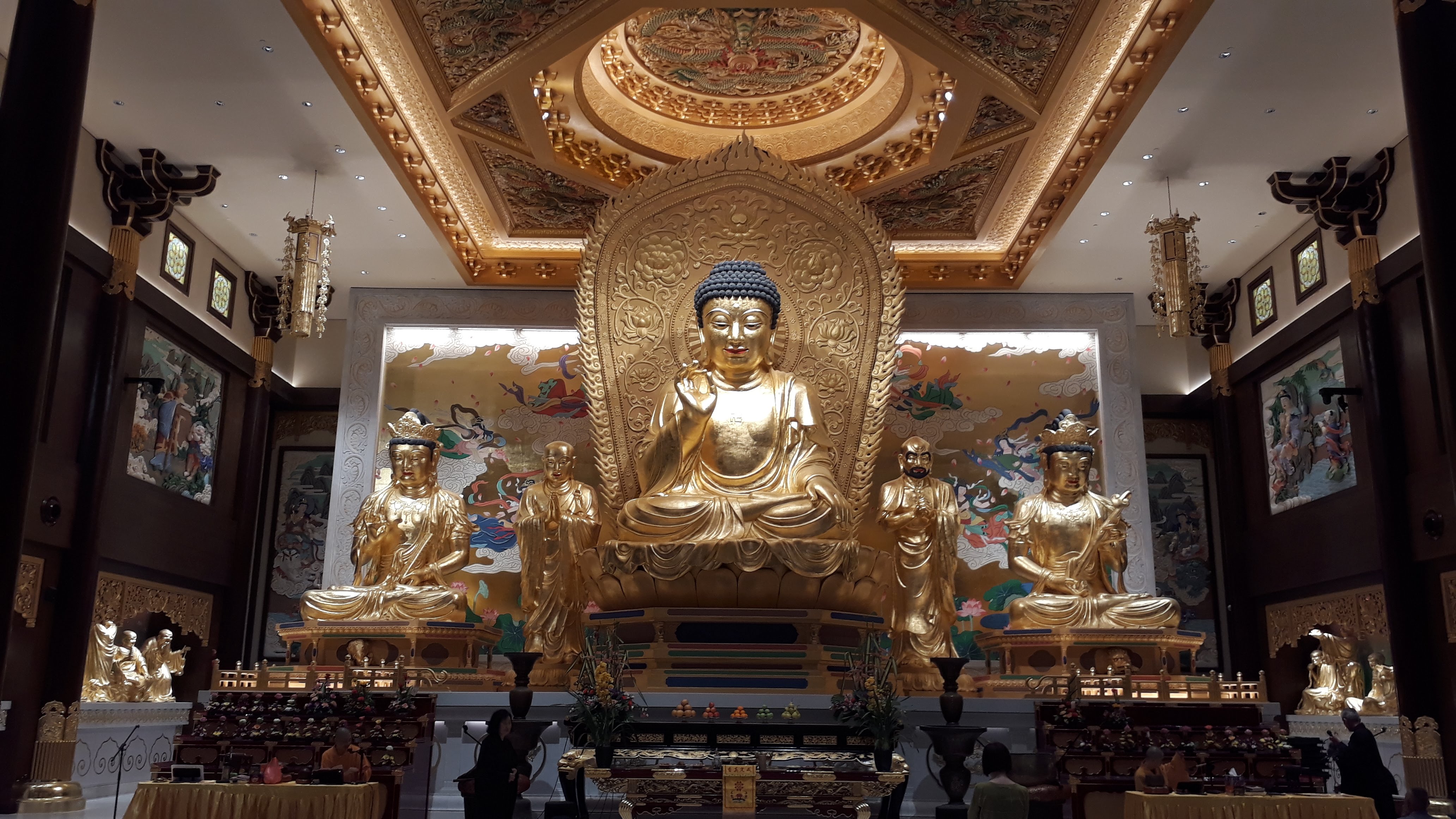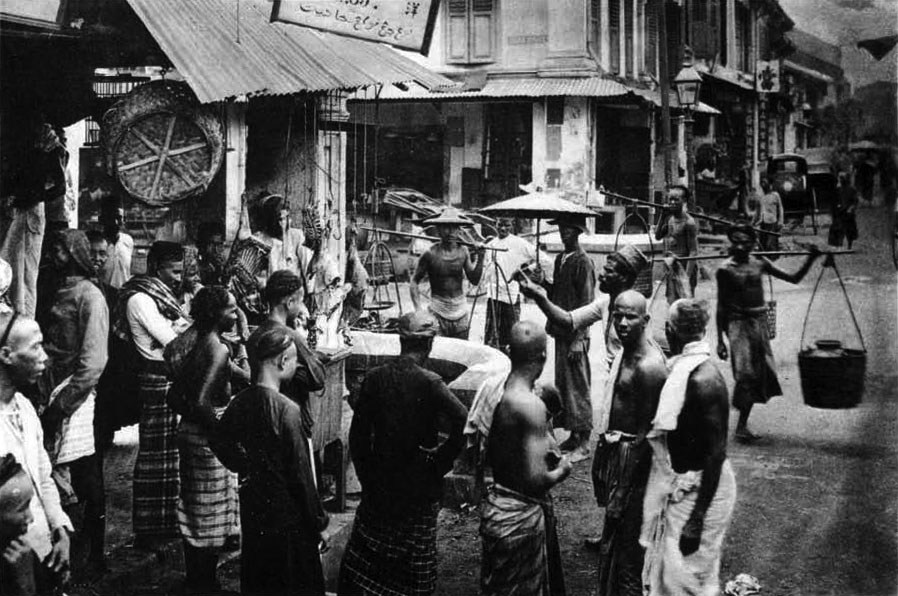|
Zhuan Dao
Venerable Zhuan Dao (; 18711943) was the founder of the Kong Meng San Phor Kark See Monastery in Singapore. Biography Venerable Zhuan Dao was born in 1872 and was ordained as a monk at nineteen years old. In 1906, he assisted Venerable Hsu Yun to deliver the royal Tripitaka Volume to a monastery in Yunnan. Poo Thor Jee (普陀寺) was founded in 1911 by Venerable Zhuan Dao at Narcis Street in Tanjong Pagar, which was eventually rebuilt at Yan Kit Road in 1968. Venerable Zhuan Dao was well-known within the Chinese community in Singapore for his medical knowledge and often provide free medical services to masses, particularly in curing children's illness. He founded the Phor Kark See Temple in 1920. The temple was built in 1921 on a plot of land donated by Chinese businessman, Tay Woo Seng, and subsequently became known as the Kong Meng San Phor Kark See Monastery, after the location "Bright Hill" that it was built on. In 1926, Venerable Zhuan Dao collaborated with several lay Bu ... [...More Info...] [...Related Items...] OR: [Wikipedia] [Google] [Baidu] |
Buddhism
Buddhism ( , ), also known as Buddha Dharma and Dharmavinaya (), is an Indian religion or philosophical tradition based on teachings attributed to the Buddha. It originated in northern India as a -movement in the 5th century BCE, and gradually spread throughout much of Asia via the Silk Road. It is the world's fourth-largest religion, with over 520 million followers (Buddhists) who comprise seven percent of the global population. The Buddha taught the Middle Way, a path of spiritual development that avoids both extreme asceticism and hedonism. It aims at liberation from clinging and craving to things which are impermanent (), incapable of satisfying ('), and without a lasting essence (), ending the cycle of death and rebirth (). A summary of this path is expressed in the Noble Eightfold Path, a training of the mind with observance of Buddhist ethics and meditation. Other widely observed practices include: monasticism; " taking refuge" in the Buddha, the , and the ; ... [...More Info...] [...Related Items...] OR: [Wikipedia] [Google] [Baidu] |
Kong Meng San Phor Kark See Monastery
The Kong Meng San Phor Kark See Monastery (also the ''Bright Hill Pujue Chan Monastery'') (), is a Buddhist temple and monastery in Bishan, Singapore. Built by Zhuan Dao in the early 20th century to propagate Buddhism and to provide lodging for monks, this monastery is the largest Buddhist temple in Singapore. It is the parent organization of thBuddhist College of Singaporefounded in 2006. It is one of the two private crematoria, while the other one is Tse Toh Aum Temple. History Between 1920 and 1921, the Phor Kark See Monastery was built on the a plot of land in Thomson Road donated by Tay Woo Seng, a Chinese businessman. It was the first traditional Chinese monastery to be built in Singapore. Since Phor Kark See Monastery is situated at Kong Meng San ("Bright Hill", formerly "Hai Nan Mountain"), it has come to be known as "Kong Meng San Phor Kark See Monastery". The original temple consisted of a two-storey building, a shrine room, a visitors' room and living quarters. ... [...More Info...] [...Related Items...] OR: [Wikipedia] [Google] [Baidu] |
Hong Choon
Hong Choon (; 1907–1990) was the second president of the Singapore Buddhist Federation and the second abbot of Kong Meng San Phor Kark See Monastery. Early life Hong Choon was born in 1907 in Jinjiang, Fujian province, China. In 1922, he was ordained by Hui Quan at Cheng Tian Temple and was given his Dharma name, Hong Choon. During the Sino-Japanese war, Venerable Hong Choon fled southern China with his master, seeking refuge in Singapore. Hong Choon also studied Feng Shui under Master Yen Ben in the 1950s. Career Venerable Hong Choon became the abbot of Kong Meng San Phor Kark See Monastery in 1943, administering the temple and representing it at social and Buddhist functions over more than four decades, propagating Buddhism in Singapore. During his leadership, the monastery transformed from two shrine halls into a monastic facility with a total area as large as ten football fields, the largest venue of Buddhist practice in Singapore. He also initiated the monthly Great Comp ... [...More Info...] [...Related Items...] OR: [Wikipedia] [Google] [Baidu] |
Singapore
Singapore (), officially the Republic of Singapore, is a sovereign island country and city-state in maritime Southeast Asia. It lies about one degree of latitude () north of the equator, off the southern tip of the Malay Peninsula, bordering the Strait of Malacca to the west, the Singapore Strait to the south, the South China Sea to the east, and the Straits of Johor to the north. The country's territory is composed of one main island, 63 satellite islands and islets, and one outlying islet; the combined area of these has increased by 25% since the country's independence as a result of extensive land reclamation projects. It has the third highest population density in the world. With a multicultural population and recognising the need to respect cultural identities of the major ethnic groups within the nation, Singapore has four official languages: English, Malay, Mandarin, and Tamil. English is the lingua franca and numerous public services are available only in Eng ... [...More Info...] [...Related Items...] OR: [Wikipedia] [Google] [Baidu] |
Tay Woo Seng
Tay may refer to: People and languages * Tay (name), including lists of people with the given name, surname and nickname * Tay people, an ethnic group of Vietnam ** Tày language *Atayal language, an Austronesian language spoken in Taiwan (ISO 639-3 code "tay") *TAY (singer), Portuguese singer Tiago Amaral (born 1999) Places * River Tay, a river in Scotland ** Tay Bridge, a railway bridge that collapsed, killing all on board a train ** Loch Tay, a freshwater loch ** Firth of Tay, the estuary into which the Tay flows * Tay, Ontario, Canada, a township * Tay River, Ontario, Canada ** Tay Canal, a part of the river * Tay Sound, Nunavut, Canada * Tay, Iran * Tay, Ardabil, Iran * Lough Tay, a lake in County Wicklow, Ireland * Tay Head, Antarctica **Firth of Tay (Antarctica) * Tayside, a former local government area in Scotland Science and technology * Tay (bot), an AI chatbot released by Microsoft in 2016 * Rolls-Royce RB.44 Tay, a turbojet aircraft engine * Rolls-Royce RB.183 Tay, a ... [...More Info...] [...Related Items...] OR: [Wikipedia] [Google] [Baidu] |
Singapore Buddhist Lodge
The Singapore Buddhist Lodge (SBL; ) is a lay Buddhist and charitable organization in Singapore. Founded in 1934, it is one of the oldest charities in Singapore. History The Singapore Buddhist Lodge was founded by around 100 philanthropists, members of Singapore society. A building at 26 Blair Road and around S$1,000 cash were donated by Lee Choon Seng.Ong, "Chinese Mahayana Lay organisations", pp. 49—50. Membership increased to 2,000 patrons by 1946. The charity began renting premises at 17 Kim Yam Road. The building was purchased outright in 1950, with a donation of S$10,000 from Zhang Jiamei and Zhong Tianshui and money obtained in a fundraising drive.Ong, "Growth of lay organisations", p. 77. See also * Buddhism in Singapore * List of Buddhist temples in Singapore * List of voluntary welfare organisations in Singapore This is a list of social service agencies (SSA) in Singapore. These agencies are members of the National Council of Social Service (NCSS) in Singapore. ... [...More Info...] [...Related Items...] OR: [Wikipedia] [Google] [Baidu] |
Buddhism In Singapore
Buddhism in Singapore is the largest religion in Singapore, practiced by approximately 31.1% of the population as of 2020. In 2015, out of 3,276,190 Singaporeans polled, 1,087,995 (33.21%) of them identified themselves as Buddhists. Buddhism was introduced in Singapore primarily by migrants from around the world, particularly ethnic Chinese people, over the past centuries. The first recorded histories of Buddhism in Singapore can be observed in early monasteries and temples such as Thian Hock Keng and Jin Long Si Temple that were built by settlers that came from various parts of Asia. There are a variety of Buddhist organizations in Singapore, with the more predominant authorities being established ones such as the Singapore Buddhist Federation. History Given the historic status of Singapore as a British trade port and colonial state, as well as a brief period of Japanese colonial rule during World War II, over the centuries a variety of Buddhist lineages from across the globe ... [...More Info...] [...Related Items...] OR: [Wikipedia] [Google] [Baidu] |
List Of Buddhist Temples
This is a list of Buddhist temples, monasteries, stupas, and pagodas for which there are Wikipedia articles, sorted by location. Australia Bangladesh Bhutan Brazil * Khadro Ling Buddhist Temple, Três Coroas, Rio Grande do Sul * Zu Lai Temple, Cotia, São Paulo Cambodia Canada Denmark * Havredal Zendo, Viborg France * Kagyu-Dzong, Paris * Lerab Ling, Montpellier * Pagode de Vincennes, Bois de Vincennes * Plum Village Monastery * Vajradhara-Ling and Temple for Peace, Aubry-le-Panthou, Normandy Germany * Das Buddhistische Haus (engl.: ''the Buddhist house''; oldest Buddhist temple in Europe) * German Dharmaduta Society * Mahamevnawa Buddhist Monastery, (Theravada) Greece *Kalachakra Stupa, in Karma Berchen Ling Buddhist Center, Lagkadaiika, Xylokastro Hungary * Hungarian Shaolin Temple * Wonkwangsa International Zen Temple, Esztergom (Taego Order, Korean tradition) India Indonesia Italy * Ensoji il Cerchio (Soto Zen) * Istituto Lama T ... [...More Info...] [...Related Items...] OR: [Wikipedia] [Google] [Baidu] |
Singaporean Religious Leaders
Singaporeans, or the Singaporean people, refers to citizens or people who identify with the sovereign island city-state of Singapore. Singapore is a multi-ethnic, multi-cultural and multi-lingual country. Singaporeans of Chinese, Malay, Indian and Eurasian descent have made up the vast majority of the population since the 19th century. The Singaporean diaspora is also far-reaching worldwide. In 1819, the port of Singapore was established by Sir Stamford Raffles, who opened it to free trade and free immigration on the island's south coast. Many immigrants from the region settled in Singapore. By 1827, the population of the island was composed of people from various ethnic groups. Singapore is a multilingual and multicultural society home to people of groups of many different ethnic, religious and national origins, with the majority of the population made up of Chinese, Malay, Indian and Eurasian descent. The Singaporean identity was fostered as a way for the different ethnic gr ... [...More Info...] [...Related Items...] OR: [Wikipedia] [Google] [Baidu] |
Singaporean Buddhist Monks
Singaporeans, or the Singaporean people, refers to citizens or people who identify with the sovereign island city-state of Singapore. Singapore is a multi-ethnic, multi-cultural and multi-lingual country. Singaporeans of Chinese, Malay, Indian and Eurasian descent have made up the vast majority of the population since the 19th century. The Singaporean diaspora is also far-reaching worldwide. In 1819, the port of Singapore was established by Sir Stamford Raffles, who opened it to free trade and free immigration on the island's south coast. Many immigrants from the region settled in Singapore. By 1827, the population of the island was composed of people from various ethnic groups. Singapore is a multilingual and multicultural society home to people of groups of many different ethnic, religious and national origins, with the majority of the population made up of Chinese, Malay, Indian and Eurasian descent. The Singaporean identity was fostered as a way for the different ethnic ... [...More Info...] [...Related Items...] OR: [Wikipedia] [Google] [Baidu] |
1871 Births
Events January–March * January 3 – Franco-Prussian War – Battle of Bapaume: Prussians win a strategic victory. * January 18 – Proclamation of the German Empire: The member states of the North German Confederation and the south German states, aside from Austria, unite into a single nation state, known as the German Empire. The King of Prussia is declared the first German Emperor as Wilhelm I of Germany, in the Hall of Mirrors at the Palace of Versailles. Constitution of the German Confederation comes into effect. It abolishes all restrictions on Jewish marriage, choice of occupation, place of residence, and property ownership, but exclusion from government employment and discrimination in social relations remain in effect. * January 21 – Giuseppe Garibaldi's group of French and Italian volunteer troops, in support of the French Third Republic, win a battle against the Prussians in the Battle of Dijon. * February 8 – 1871 French legislative election elect ... [...More Info...] [...Related Items...] OR: [Wikipedia] [Google] [Baidu] |





_(LOC)_-_Flickr_-_The_Library_of_Congress.jpg)